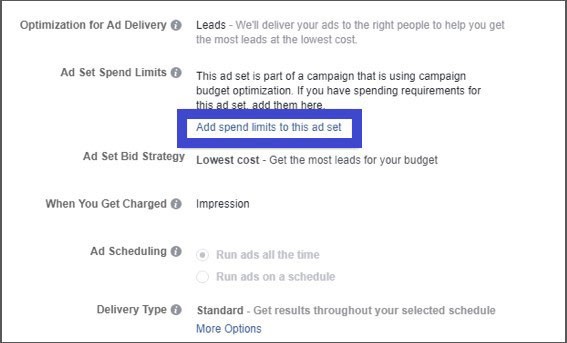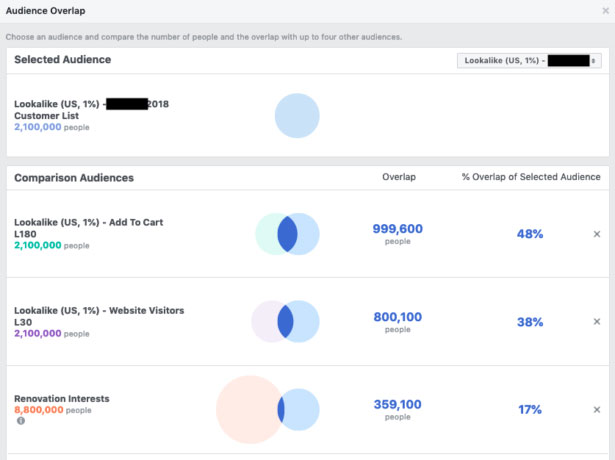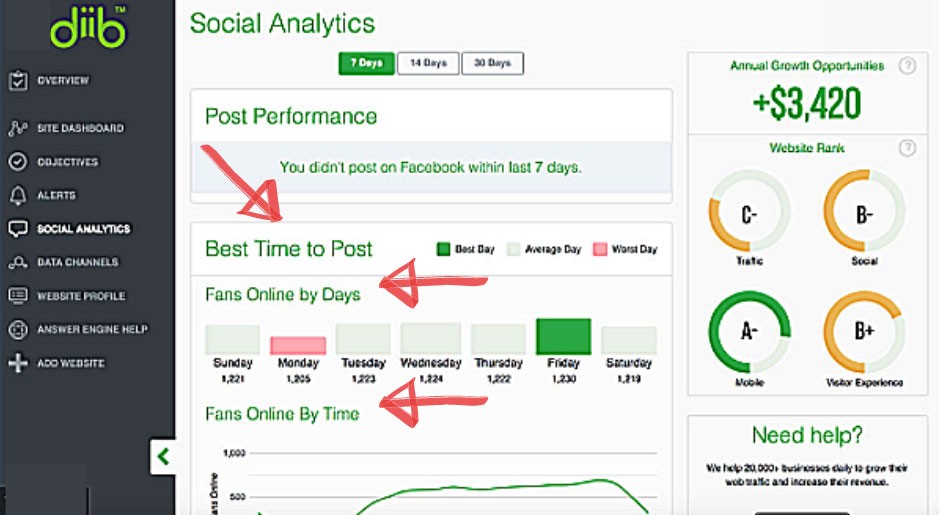Traditional forms of advertising are slowly being taken over by new-age technology. Social media platforms, in particular, have changed how companies are reaching target audiences through their marketing campaigns. Many people are turning to social media to get reviews and more information about available products and services.
Having over 2.7 billion monthly active users, Facebook is undoubtedly the household name in social media globally. For this reason, most businesses and organizations are using its worldwide reach to get more leverage in their campaigns and eliminate no reach Facebook ads.
Facebook uses ad auction in deciding the best adverts to display to someone at a specified point in time. The ad shown is dependent on its total value; where the advertisement with the highest total value gains more reach than the rest. The total weight is a combination of a bid, estimated action rates, and the ad’s quality. While the maximum reach of target audiences at the lowest cost possible is the desire of enterprises, it may not always be the case.
No reach Facebook ads mean that the business has no return on investment, and is on a losing trajectory. With a Facebook ad approved and active but not delivering, it can be a major cause of alarm. Here are some of the most common reasons for no reach Facebook ads.
Ads Rejection by Facebook
Facebook has a responsibility to ensure that its users are protected from misleading information and illegal products. If the Facebook algorithm detects any or a combination of violations of its policies, the ad will not be approved. Here are some examples:
- Facebook is against advertisements that promote and simulate smoking. Commodities such as cigarettes, cigars, tobacco pipes, hookah, electronic cigarettes, rolling papers or vaporized delivery devices. Images or videos showing a person smoking or having hookah pipes are deemed non-compliant.
- Ads containing illegal drugs, or related products, unsafe supplements are forbidden.
- Pharmaceutical products are banned even though technically they are legal.
- Fake news, sensational or adult content is also banned. Advertisements that depict “get rich quick methods” or cryptocurrencies are not allowed.
- Anything that demotes human existence such as violence, sale of body parts and human trafficking is unacceptable.
There are many other reasons for rejecting a Facebook ad. However, if your ad is rejected, the Facebook team sends you an email pinpointing the violation. You have the option of editing your ad, or you can appeal if you think the Facebook algorithm misjudged the ad. The image below shows an example of a notification Facebook sent to the user about their ad:

(Image Credit: Boostlikes)
Test your website’s SEO and social media score in 60 seconds!
Diib is one of the best SEO and social media monitoring tools in the world. Diib syncs to Facebook and Google Analytics and uses the power of big data to help you quickly and easily increase your social media traffic and SEO rankings.
- Easy-to-use automated social media + SEO tool
- Keyword and backlink monitoring + ideas
- Speed, security, + Core Vitals tracking
- Automated ideas to improve Social Media traffic + sales
- Over 500,000 global members
- Built-in benchmarking and competitor analysis
Used by over 500k companies and organizations:
Syncs with 
Wrong Objective
Facebook allows you to create an ad campaign based on your desired goals. A campaign’s objectives are categorized by awareness (brand awareness or reach), considerations (traffic, engagement, app installations, views and lead generation) and conversations.
The goal of the Facebook algorithm is to target the audience with more precision. For instance, if you’re interested in having more traffic to my website. The Facebook algorithm will likely target audiences who have had such an interaction with similar ads in the past. Therefore, if your target audience rarely visits landing pages, you may need to change your objectives.
Suppose your objective is to optimize conversions. Facebook uses conversion metrics to target the right audience. Facebook may lack sufficient data to find who exactly may be interested in a certain ad campaign.
It is important to note that Facebook uses historical data to meet objectives for the best possible outcome. Facebook insights are crucial in identifying and selecting the most appropriate goals.
You may discover that instead of your objective being to generate more conversions in the first ad, getting more clicks may be a better fit. This is likely due to the fact that Facebook requires some consistency in conversions in order to determine the right audience interested in certain ad campaigns. Here are all of the objective options available for Facebook ads:

Budget
Facebook uses your bid as a guide to ensure that you get the desired outcome for your optimized goal. Facebook allows for manual bidding and automatic bidding.
- In manual bidding, Facebook gives you complete control over to set cost control against the desired purpose. In other words, you tell Facebook how much you are willing to pay for the objective.
Suppose my minimum daily budget is $1.5, and it must be at least four times my cost per click (CPC). It implies that if I have a $3 CPC, then my daily budget must be at least or surpass $18.
You Might Also Like
- In automatic bidding, the Facebook algorithm finds the minimum cost for the objective that you are bidding. If I select my minimum daily budget to be $1, it must be at least three times my CPC. If my CPC is $1.5, then it means that my daily account must be at least $13.5.
The minimum daily budget is, however, different from the account spending limit. The spending limit refers to the total spending limit for an ad account. When a Facebook ad is approved and active but not delivered, you may require to check the spending limit. Once the limit is attained, it may be the cause of your Facebook ad not reaching anyone.

An additional budget is critical in improving the performance of a campaign. When my bid budget is competitive enough against other advertisers, there is a high likelihood of getting more impressions on my ads.
When setting the budget and bid restrictions, it is reasonable to place it so that Facebook gets enough time to learn and optimize. Starting with automatic bidding may prove a worthy cause before adjusting rested on the initial performance.
Instead of worrying, why isn’t my Facebook ad running, checking on the limit is a good starting point. Suppose the initial limit is attained removing, changing or resetting the spending limit allows Facebook to show ad campaigns.
Audience Overlap
Whenever you target the same audience with different sets of ads, it is referred to as an audience overlap. More often than not, we fall in the trap of using other ads to promote our products to the same audience. While it is true that the same audience may purchase both products, to Facebook, this is erroneous.
Facebook’s algorithms are designed to ensure that you do not compete with yourself. To do this during an auction, Facebook may choose one ad over the other. This means that one of the two ads will not be active.
So, why isn’t my Facebook ad running? Let us put this into perspective to get a clear picture. Suppose you’re selling sports shoes online and decide to create three ad sets with a distinctive audience.
Your first target is defined by interest. Supposing a large number of your clients are marathoners, you’ll want to set your target audience for people with interest in marathons.
You may want to set your target audience demographics to the ages of 20 to 35 years since they form a large part of the demographic for this type of interest. Finally, use Facebook’s lookalike tool to generate 1% of my usual customers’ lookalike.
Let us see how an overlap would occur based on the three chosen ad sets. There is a high probability of the three audiences having similar attributes.
- I am likely to find people aged between 20 to 35 years old among those interested in marathons.
- Among people aged 20 to 35 years old, there shall be those interested in marathons.
- Since most of my customers will be similar, my lookalike will contain people interested in marathons and those aged 20 to 35 years old.
Placing such ads on Facebook may lead to limited ads’ displays since they are competing against each other.
The overlapping audience is associated with high cost and little return on investment. It is best practice to check the audience insights from the Ads Manager. Select one audience and compare it against another to show the percentage overlap if any. The image below shows an example of what it looks like to compare audience overlap:

(Image Credit: PPC Hero)
In the event of an overlap, rearranging the ads to have fewer ad sets prevent competition for the same audience. Another way to counter overlap is to exclude some interests, behaviors, or demographics when refining each ad set’s various aspects.
Low Relevance to Target Audience
Facebook relevance score is the rating of how its target audience is receiving an ad. The relevance score is generated after 500 impressions. The rating score is based on a score of 1-10, where a 10 means the highest relevance score.
A low relevance score implies that your target audience is merely skipping or bypassing the ad on purpose. When the score is low, it is an indication that your target audience is sending negative feedback on Facebook. Negative feedback happens when your target audience tells Facebook to hide such ads or report the ad as offensive or merely inappropriate.
Another way that shows low ad relevance is when your ad has no positive engagement. People react to advertisements in a different way. If an ad receives bad reaction emojis, nasty comments, or no shares, comments, or likes, it means that the ad is not relevant.
Whichever way, they all add up to the relevance score. When the score rating dips into the lower numbers, mostly below four, it means the ad is irrelevant, and it has no value to its target audience. If you are still puzzled, why isn’t my Facebook ad running, then you need to check on its relevance score.
There are several ways you can increase the relevance score. The first and most effective way is to understand and create specific ads for your target audience. Your ads should resonate well with the demographics, pain points, and customer interests to raise the relevance score.
You may need to make your ads more fun and exciting to watch. Select the images and colors that are eye-catching and hard to bypass. Be more creative and engaging in your videos and evoke the right emotions in your ads.
We hope that you found this article useful.
If you want to know more interesting about your site health, get personal recommendations and alerts, scan your website by Diib. It only takes 60 seconds.
Issues with Landing Pages
Facebook always requires that you provide a link for your landing page, which is thoroughly reviewed before your ad gets the green light. The quality of a landing page is a possible answer to the question why is my Facebook Ad not reaching the clients. When you get a high bounce rate, the chances are that Facebook will stop showing your ads.
If customers visit my page and there are many and confusing products, chances are they will leave. After a successful CTA (call to action), the customers should find the exact solutions as per the ad. If the naming or wording used is different, then the ad is not specific, discouraging any conversions. In a nutshell, consistency between ads and landing pages is essential.
Ensure that the CTA button has the right color, size, and message. The CTA should have a contrasting color to the background for greater visibility. The size should be reasonably hefty, not too small for a quick glimpse, and neither too huge to scare away customers. The message needs to be tailored and create some sense of urgency. For instance:

(Image Credit: Getsitecontrol)
The landing page should be responsive to mobile devices. The majority of internet users today, mainly social media platforms, consume most of the content via mobile phones. If the landing page is not mobile-friendly, Facebook will not show the ad to the target audience.
The landing page should load fast. Otherwise, if it takes several minutes for the page to show up, customers will avoid it. Ensure that the images on the landing page are optimized for low loading speeds.
The landing page should be free of an unwarranted controversial, adult, or interstitial webpages. Whenever a landing page contains sensitive information, Facebook will not recommend the ad. Webpages and pop-ups that are displayed right before or after the expected page content annoy users leading to a bad user experience.
Therefore, it is best to always check the landing page’s quality before including it in an ad.
Low-quality Ads
In 2018 Facebook came up with a measure to curb low-quality ads on its platform. A low-quality ad refers to any ad that has no meaningful connection between people and businesses. When the ad is deemed a click-bait, engagement bait, or with sensationalized language, Facebook will flag it for low quality.
A click-bait is an ad that intentionally withholds information to lure people into clicking on it to get full details. For example, an ad that contains a format such as “How to Lose Weight Using this One Simple Trick” is considered a click-bait on Facebook.
Engagement bait is an ad that uses spammy content to entice people to engage in it through particular ways such as likes, comments, tags, or shares. For instance, “Share with 20 friends for a chance to win a holiday in Maldives”.
Sensationalized language refers to the use of exaggerated titles that do not deliver on the landing pages. For example, “6 ingenious use of Washing Machine.”
Facebook will not display any ad content with such characteristics. Advertisers with multiple such ads will be penalized and have other ads seriously impacted due to such ads.
If your ad is flagged for such, ensure that you edit the content and remove anything falling in the above categories.
Poor Scheduling
The question of what is the best time to run an ad remains a mystery to many. While some people argue evenings during dinner is the best time, others will say that weekend is the best time.
Despite the arguments, we all agree that the best time to run a Facebook ad is when most of the target audience is online. It is why the timing will differ from one company to another and one industry to the next.
Marketers, therefore, need to keenly examine metrics of when most of the target consumers are online. You can do this by using social analytics tools such as this one:

Facebook allows users to schedule advertisements based on your actions, which is, toggling on or off. Otherwise, you can schedule the ads to pause after a particular duration if you have no sales. Though the two methods are the most common, it is possible to create a schedule based on click through rates (CTR), frequency level, or if the CPA is below target.
Scheduling is a common reason some Facebook ads don’t reach anyone. To counter this, always ensure that you set new dates if the end dates have already passed, restart paused ads, or have periodic changes on my schedule.
20% Text Rule
Ads having more than 20% of text cover than images perform poorly on Facebook. Texts refer to logos, watermarks, company slogans, and any other text information. This rule aims to reduce noisiness and news feed saturation.
Whereas we cannot undermine the value of texts, Facebook research and findings indicate that images with less than 20% text content tend to perform better.
Although Facebook accepts images with over 20% text, it does give warning alerts based on the use. The warning is based on image text rating. An OK rating shows that the text is within the 20% threshold and should run normally. Texts above 20% are rated low, medium, and high. Low ratings depict a lower reach, medium show much lower reach, and high rating may result in the ad not running on Facebook.
Diib®: Analyze Your Facebook Ads Reach
Diib Digital offers comprehensive metrics that can help you analyze the effectiveness and reach of your Facebook Ads. Whether your ads aren’t reaching anyone or don’t seem to be reaching many people, we can help. Here are a few of the features of our User Dashboard that can help:
- Social media integration and performance
- Platform specific audience demographics
- Keyword, backlink, and indexing monitoring and tracking tools
- User experience and mobile speed optimization
- Technical SEO monitoring
Call today at 800-303-3510 to speak with one of our Professional Growth Experts or click here for your free 60 second site scan.
FAQ’s
One of the reasons your Facebooks ads might not be performing well is because of your bidding strategy. If your clicks and impressions aren’t what you would like them to be first check your bidding section.
If your Facebook posts aren’t reaching anyone you might want to check your posting schedule. Many business owners either post at the wrong time of day or they post too much or too little. You can fix this problem by checking social analytics tools. These tools can help you determine the best time to post.
Here are a few ways you can increase your ad reach on Facebook:
- Retarget your Facebook ads.
- Write better ad copy.
- Find ways to increase your engagement.
- Use Facebook’s help.
If you are worried about your ad not delivering first check the status of your ad. If your ad is pending and has been pending for more than a day go to the form called “Ads Pending Review more than 24 hours”.
The easiest way to determine if your Facebook ad is working is to go to the Facebook Ads Manager. There you can look at all of your campaigns and monitor your performance metrics. If your metrics are moving up your Facebook ad is working.




Daria says:
Thanks for the article!
This is the best guide to advertising on Facebook for beginners. Your article is very useful, and as a beginner I would like to ask whether it is worth using automation tools like Aitarget at the beginning of advertising on social networks?
Archana K says:
The tip on sensationalization of titles piqued my interest as I had not specifically thought of it. Sometimes, even without intending to do so, titles end up being somewhat of an exaggeration. Keeping a check on the tone and how big a promise or claim we are making, will help us keep in line.